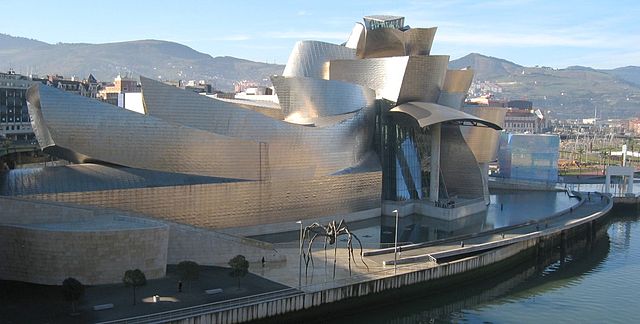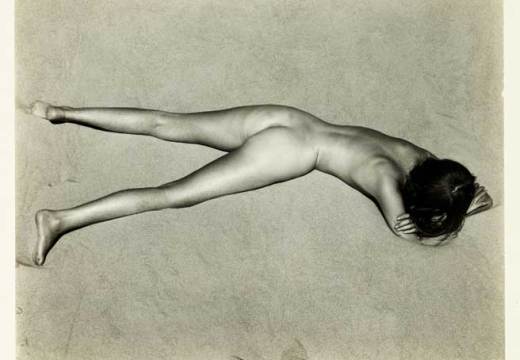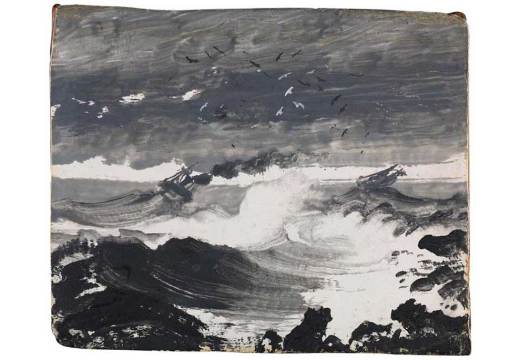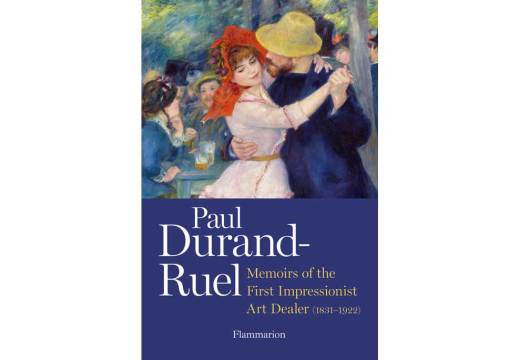YES: Lee Rosenbaum
The Solomon R. Guggenheim Foundation’s post-Bilbao misadventures in trying to plant its flag on foreign soil demonstrate why such forays are almost always doomed to failure: there’s a disconnect between what each side hopes to get from these international alliances. What’s more, there can be critical differences about how such plans should be executed. The still active but as yet unrealised proposals for Guggenheim offshoots in Helsinki and Abu Dhabi are cases in point.
The Guggenheim’s director, Richard Armstrong, recently told Dezeen magazine that his vision for satellite museums is ‘to stop being an exporting institution and instead be a collaborative one’. That’s his concept for the proposed Guggenheim Helsinki, which recently chose six finalists from the astonishing 1,715 submissions to its design competition.
But launching and managing a satellite museum in a foreign country that is capable of conceiving and managing its own cultural institutions is not collaboration; it’s colonisation. The never-realised Guggenheim proposals for outposts in Rio de Janeiro, Guadalajara, Tokyo, Taichung, Hong Kong, Salzburg, Singapore and Vilnius are compelling evidence that new institutions need to take root organic- ally, arising from the wishes and imperatives of a country’s own cultural community, not from a foreign institution’s well-intentioned, but ultimately self-interested agenda.
Initial sparks of interest for ‘global Guggenheims’ in foreign countries typically flame out for two reasons: the multimillion-dollar tribute (euphemistically, ‘licensing fee’) that the Guggenheim exacts; or the disparity between the home country’s cultural priorities and those of the American alien. The proposed satellites invariably become political footballs and the Guggenheim is not on its home turf.
The success of the Guggenheim Bilbao was not simply due to Frank Gehry’s titanium tourist magnet. It also required the unflashy management skill of Juan Ignacio Vidarte, who helped conceive the project and continues to be the museum’s director general. A former Basque government bureaucrat with no art background, Vidarte has proven to be a deft navigator through political minefields.
The initial proposal for the Helsinki Guggenheim, narrowly voted down by the city board, seemed to be driven less by Finnish priorities than by Guggenheim curators’ desire to try unconventional approaches. It was to function as a ‘cutting edge, multidisciplinary …“incubator of ideas”’. The Guggenheim would conduct experiments; the Finns would be the guinea pigs. The substantially reworked proposal defines the new facility as ‘an innovation centre for the other Guggenheim museums’. But it also caters to Scandinavian sensibilities by adopting ‘a strong focus on Nordic and international architecture and design and their intersection with art’. Unlike the rejected proposal, this one involves the creation of a permanent collection. The $30 million licensing fee remains, but would be paid by a recently created Guggenheim Helsinki Supporting Foundation, not by the government. The revised proposal still contemplates government funding towards the (as yet undetermined) cost of the building and operating costs – a sticking point for opponents.
Financial resources have never been a problem for the planned Gehry-designed Guggenheim in oil-rich Abu Dhabi. But that museum’s projected opening date has been pushed back to 2017 from the original target of 2012, and it still seems on shaky sand. Although there has been some preliminary work on the site, construction contracts have not yet been awarded at this writing. A major stumbling block has been the disparity between working conditions on construction projects in the US and those in the United Arab Emirates. New written standards to protect the rights of migrant workers in Abu Dhabi have been enforced unevenly, according to an independent auditor appointed by Abu Dhabi’s Tourism Development & Investment Company, and exposés in both The Guardian and the New York Times. Armstrong, who helped spearhead the reform efforts, conceded during a New York panel discussion at his museum in April that ‘We’re not satisfied, of course, with the current situation in UAE.’
Collegial sharing among museums of objects, exhibitions and expertise is a time-honoured practice that benefits art lovers everywhere. A better model may be that of the British Museum’s consultancy with Abu Dhabi’s planned Zayed National Museum, providing assistance with design, construction, professional development and programming (as well as loans of objects). The biggest question hovering over satellite museums is the most basic: why would sophisticated cities with their own rich cultural heritage and traditions feel the need to establish institutions that foreigners think they need? Better to build a museum on a foundation of homegrown plans and leadership, with foreign experts (if needed) in helpful but subsidiary roles.
Lee Rosenbaum writes on art and museums for the Wall Street Journal and her CultureGrrl blog.
NO: Maymanah Farhat
In 2007, when France announced a partnership with the United Arab Emirates that would lead to the establishment of the Louvre Abu Dhabi, detractors emerged from all sides. Expected to open in 2015, the museum franchise will be based on a new national collection that reflects the historical importance of the Emirates as a ‘crossroads of east and west’. Eight major French institutions, including the Louvre, the Musée d’Orsay, and the Centre Pompidou, will assist the Abu Dhabi branch in building an encyclopaedic collection while training its staff. France also agreed to loan works from its museums, which will be displayed in the galleries of the Louvre Abu Dhabi. French critics of the nearly $1.3 billion, 30-year agreement accused France’s Ministry of Culture of selling its national heritage, yet a significant portion of the loaned works will be selected from the country’s archaeological holdings, particularly of Near Eastern artefacts. Then there were the dissenting voices from the Arab world, who questioned the logic of ‘importing culture’ and the consequences of turning to a former colonial power for guidance in institution building. Added to all this were concerns over the fair treatment of migrant workers building Saadiyat Island, a cultural district in Abu Dhabi that will host several new museums, including outposts of the Louvre and the Guggenheim.
At the time, art scenes from Marrakesh to Beirut were still recovering from the arrival of Christie’s Dubai and a slew of developments that sought to ‘globalise’ regional art rapidly, through the transformation of its market and an overhaul of its cultural infrastructure. The introduction of commercial art fairs such as Art Dubai and Abu Dhabi Art, an increased number of galleries, and an influx of foreign curators and critics were all part of a larger trend that followed the creation of a local auction market under the patronage of officials in the UAE and Qatar. In art hubs like Cairo and Beirut, artists and cultural practitioners were especially sceptical of newly allocated funds and increa-sed support for the arts, given the government censorship, corruption, and negligence that have marred state-sponsored initiatives across the Middle East and North Africa in the past.
In the Gulf, the cynicism surrounding these developments has tapered, and the art franchises that gave rise to this expansion have been integrated into the larger regional art scene as mainstays. The UAE have been most successful in using franchises as initial models that are gradually tailored to local needs, namely by building an arts and cultural sector with cultural practitioners who are recruited from various aspects of the regional art scene, and are personally invested in maximising the potential of new hubs such as Dubai. More recently, Art Dubai and Abu Dhabi Art, originally a franchise of Art Paris Art Fair, have responded to the growing push for historical readings of art among MENA curators and scholars who seek to contextualise leading figures and schools within broader global movements. This has brought a level of seriousness to the government-sponsored art fairs, expanding the relevance of the market while also directing audiences to a history that might otherwise be buried in academia.
International museum franchises can add value if they respond to the needs of a given art scene by identifying the nature and pace of its growth. The Louvre Abu Dhabi, although building a national collection, appeared out of step with its ‘Birth of a Museum’ exhibition in Paris last year: the showcase of recently acquired works seemed primarily aimed at convincing the French public of the intergovernmental agreement. One of the often-repeated rationales for adopting the Louvre ‘brand’ is the concept of the encyclopaedic museum as a result of the 18th-century Enlightenment period in Europe, a soundbite that glosses over the outdated framework of the French institution. In order for the Louvre Abu Dhabi to have a lasting impact, the museum will have to discard the antiquated line of thinking that cultural directives can only be found in the fading authority of former empires.
Meanwhile, the Guggenheim Abu Dhabi has been quietly building a permanent collection that seeks to highlight the region’s foremost artists alongside their international peers. Although the Guggenheim’s flagship in New York has sought to reflect uncharted developments in contemporary art, it has been slow to adopt a more inclusive history of modernism, indicating that it has yet to fully integrate its transnational network. Perhaps the most significant challenge for the museum’s Abu Dhabi branch will be how to transition from a localised franchise to an institution that is capable of establishing a significant presence in the international art world. For a point of reference, the museum’s curators should look to the Sharjah Art Foundation, which grew from a small government-sponsored biennial into a globally recognised organisation without losing its original commitment to local artists.
Maymanah Farhat is a New York-based art historian and artistic director of Ayyam Gallery.
What do you think? Join the debate and leave a comment below…
Click here to buy the January issue of Apollo
Related Articles
Winning Guggenheim Helsinki design revealed
‘The Next Helsinki’ and the Guggenheim Helsinki are as bad as each other
Letter from Helsinki: Finland’s changing art scene
Guggenheim Helsinki should not see the light of day
Unlimited access from just $16 every 3 months
Subscribe to get unlimited and exclusive access to the top art stories, interviews and exhibition reviews.














![Masterpiece [Re]discovery 2022. Photo: Ben Fisher Photography, courtesy of Masterpiece London](http://www.apollo-magazine.com/wp-content/uploads/2022/07/MPL2022_4263.jpg)
Has the Fitzwilliam lost the hang of things?